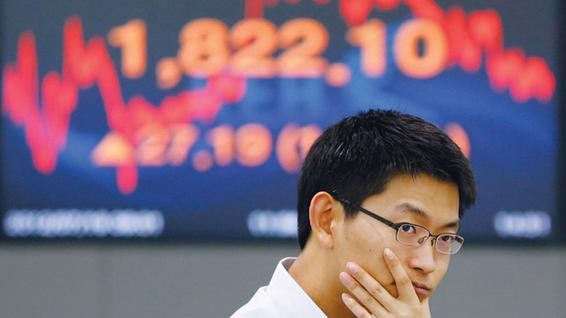QE3 triggers fear of new currency wars
Post on: 16 Июль, 2015 No Comment

Story highlights
- Traders are rapidly shifting to countries seen as less likely to weaken their currencies Weaker dollar may trigger sharp gains in emerging market currencies, analysts say Currencies whose central banks have threatened to intervene are underperforming
Fear has crept into the foreign exchange markets: fear of central banks. Currency traders are rapidly shifting assets to countries seen as less likely to try to weaken their currencies, amid concern that the fresh round of US monetary easing could trigger another clash in the currency wars.
Fund managers are rethinking their portfolios in the belief that QE3 — the Federal Reserve’s third round of quantitative easing — will weaken the dollar and trigger sharp gains in emerging market currencies. Such moves would cause a headache for central banks worried about the domestic impact of a strengthening local currency, leading to possible intervention.
Some investors are allocating money towards countries with beaten-up currencies, such as India or Russia, or those with more benign central banks, such as Mexico, that do not have a history of frequent forex intervention.
Currencies whose central banks have either intervened or threatened to intervene since QE3 have been underperforming the US dollar as investors have steered clear.
The Czech koruna is the worst-performing major currency against the dollar since QE3 was launched this month, according to a Bloomberg list of expanded major currencies. The governor of the Czech central bank last week raised the prospect of forex intervention as a tool to stimulate the economy.
The Brazilian real is also weaker in the past two weeks after Guido Mantega, finance minister, made it clear that the government would defend the real from any fresh round of currency wars sparked by the Fed’s move.
Even the Japanese yen is weaker against the dollar overall since the Fed’s move, despite having clawed back all its losses after the Bank of Japan’s move to add to its bond-buying programme last week.
Currency desks at Baring Asset Management and Amundi are avoiding the Brazilian real, which the country’s central bank keeps managed at around R$2 against the US currency, and are instead buying the Mexican peso, where the central bank has signalled it is happy for the currency to appreciate further.
James Kwok, head of currency management at Amundi, said: Mexico is an emerging market currency many managers like as they believe the central bank won’t intervene. The Singapore dollar and the Russian rouble are managed by a range, instead of one-way direction, and so are also good candidates for QE play.
He is concerned that another big scale intervention from Tokyo is on the cards after the BoJ failed to weaken the yen substantially this month, and is avoiding the currency as a result.

Currency intervention has been a growing concern for forex investors, with many now scrutinising the history of a central bank’s interventions before deciding whether to invest.
We definitely take the intervention risk into account when investing in a currency, says Dagmar Dvorak, director of fixed income and currency at Barings. In Asia, intervention risk is fairly high. We have still got positions in the Singapore dollar but remain cautious on the rest of the region.
Other investors are opting for currencies that have weakened substantially this year. Clive Dennis, head of currencies at Schroders, says: Russia and India have currencies with strong rate support and levels which remain well below their best levels of the last year, hence pose less intervention risk. I like owning those currencies in a US QE3 environment.
Some currencies are strengthening on a combination of Fed easing and domestic factors. While the Indian central bank is not seen as likely to intervene to stem any appreciation in the rupee, the currency has also been popular this month due to a reform package from the Indian government aimed at stimulating the economy.
Commodity currencies including the Russian rouble are responsive to expectations of a rise in commodity prices fuelled by Fed easing, while investors view the Mexican peso, along with the Canadian dollar, as a play on any economic recovery in the US because of their strong trade links.
However, some investors believe the QE3 effect could be lower this time. They argue that central banks in emerging markets face a tough decision over whether to weaken their currencies to help struggling exporters and stimulate growth, or allow them to strengthen to offset the impact of rising food prices.
In fact, the US dollar has shown signs of resilience since QE3 as fears over the health of the eurozone continue.
While flows into EM debt and equity funds rose substantially last week, according to data from EPFR Global, Cameron Brandt, research director, says this week’s flows looked more muted: There’s a certain amount of reaction fatigue setting in.














